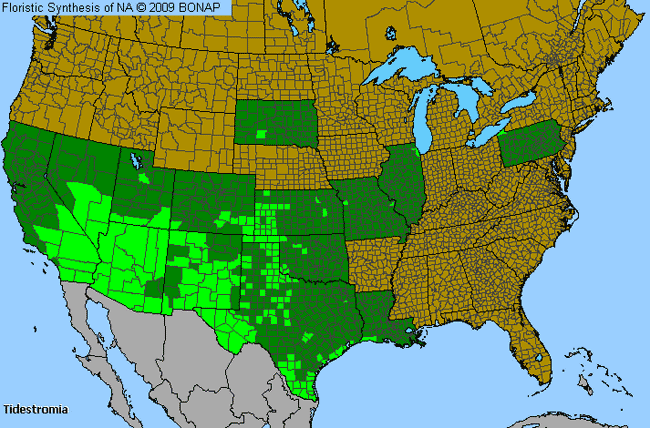Honeysweet (Tidestromia)

Honeysweet Genus Details

Honeysweet (Tidestromia lanuginosa) is an annual that grows in dense mats. It has white, fuzzy stems with small round leaves that grow up to 16 inches tall. This plant grows frequently in upland plains, waste areas and disturbed areas from western Kansas to Utah, and south to New Mexico.
Honeysweet Allergy Info

This plant has not been reported widely to cause pollinosis, but is wind-pollinated and may have some allergenicity.
Honeysweet Pollen Description

Tidestromia pollen grains, like the rest of the Amaranthaceae family, are spheroidal and pantoporate. The pores are circular and distributed across the grain. The sexine is often tegillate. The pollen grains in this family are impossible to distinguish between the genera.
Species in This Genus

Allergenicity Legend:
 Mild Allergen |
Mild Allergen |
 Moderate Allergen |
Moderate Allergen |
 Severe Allergen |
Severe Allergen |
 Allergy Test Available
Allergy Test Available
Honeysweet (Tidestromia) is a genus of the AMARANTHACEAE family.
This genus includes the following allergenic species:
This genus includes the following allergenic species:













